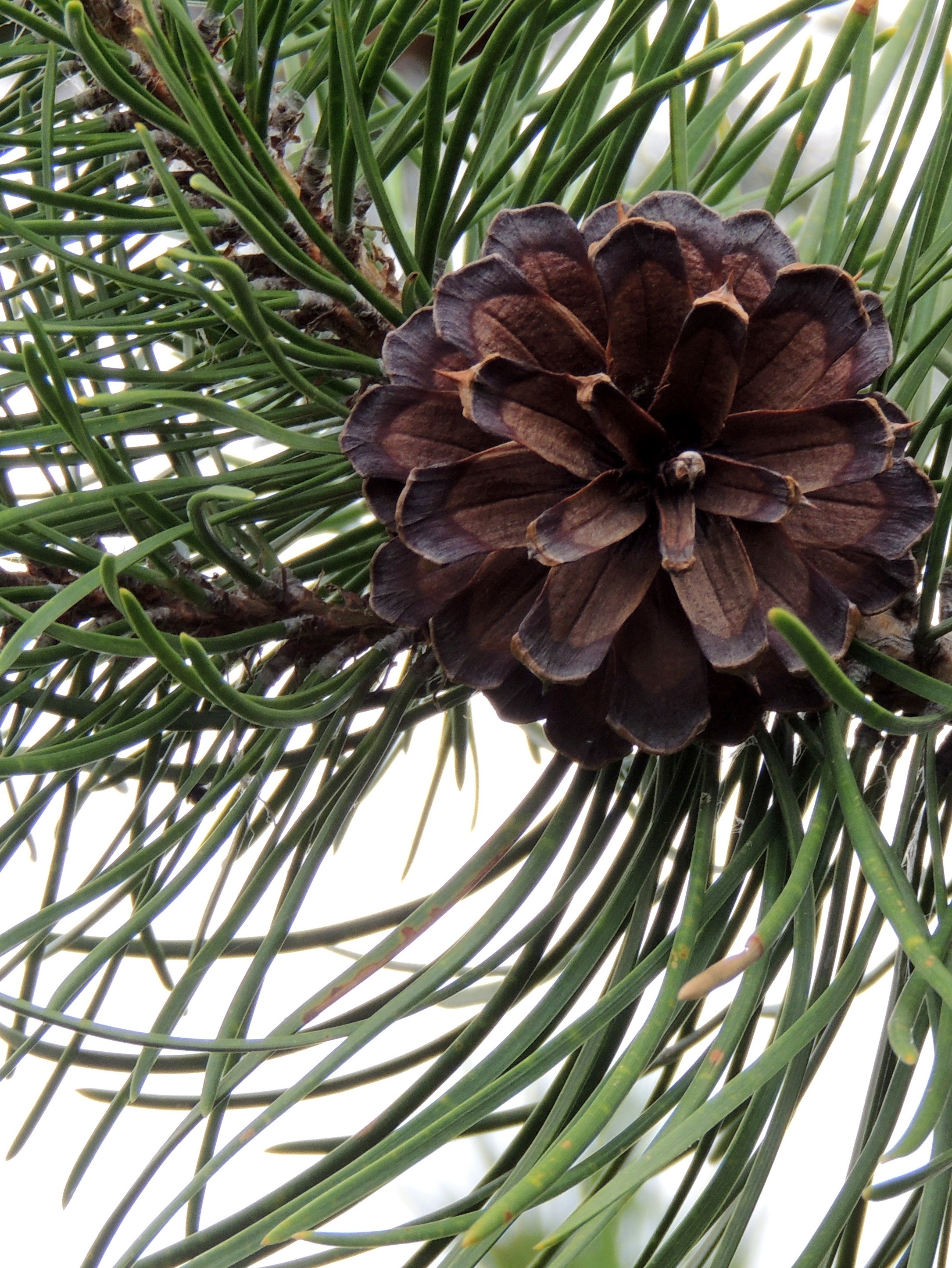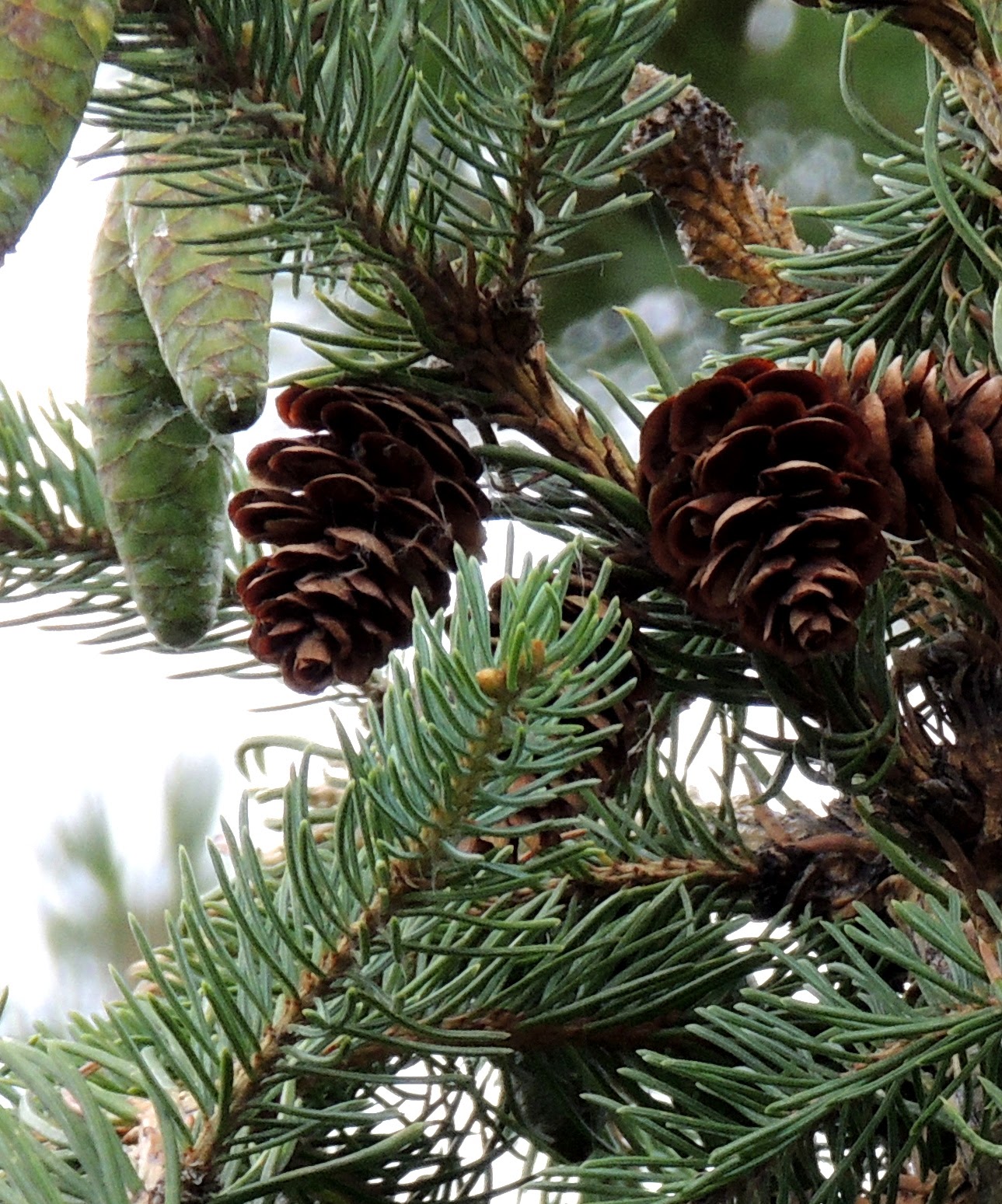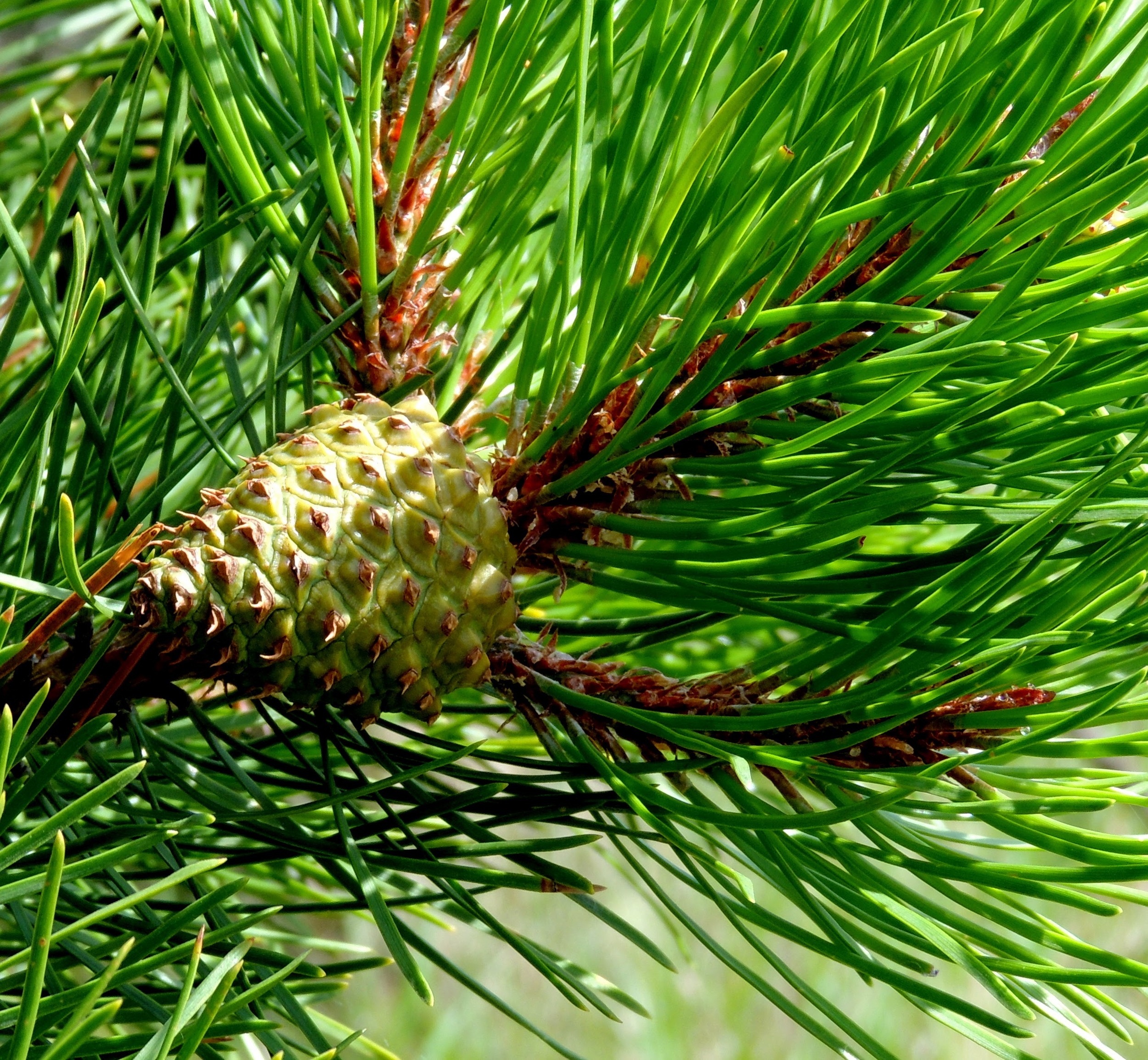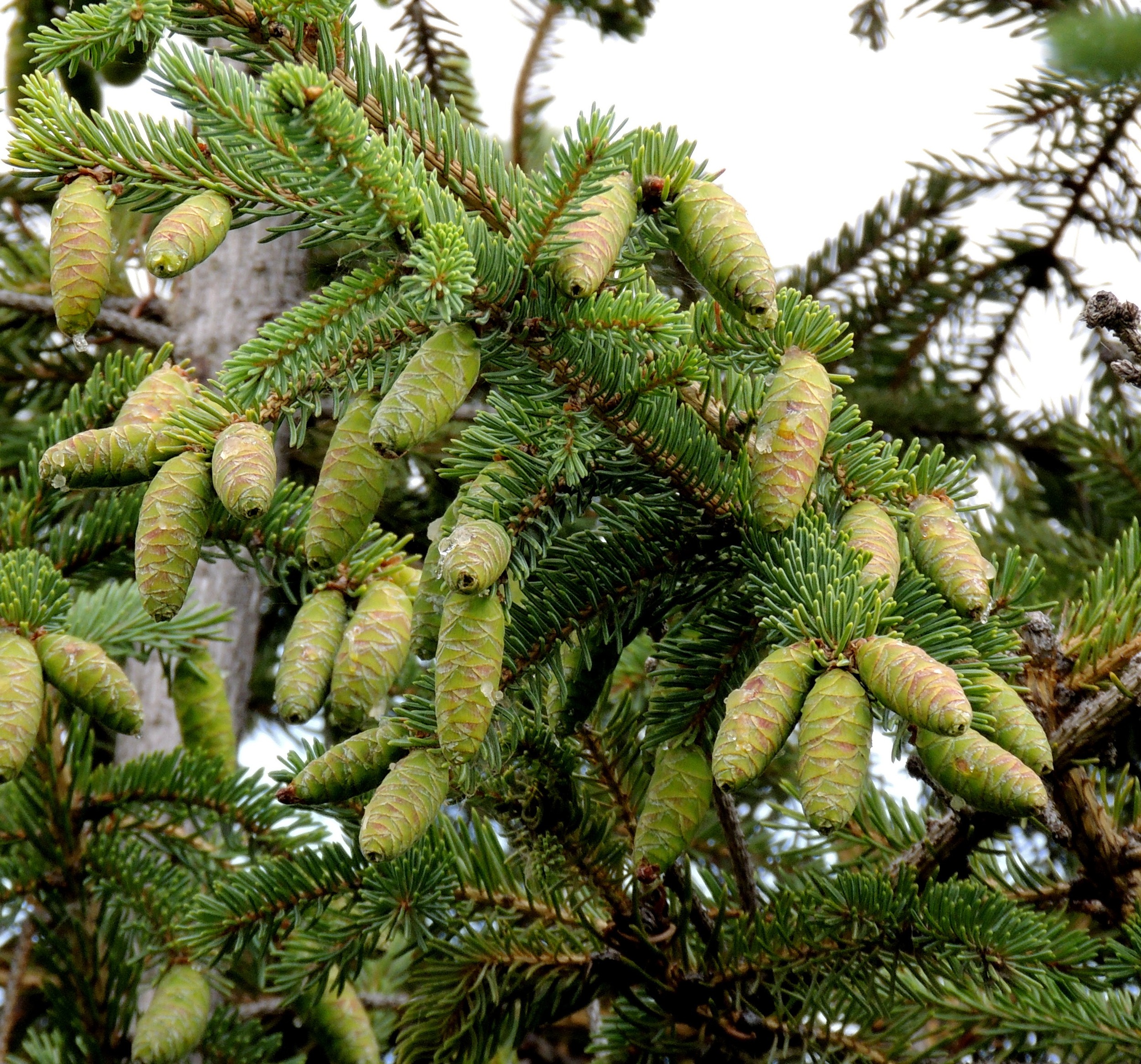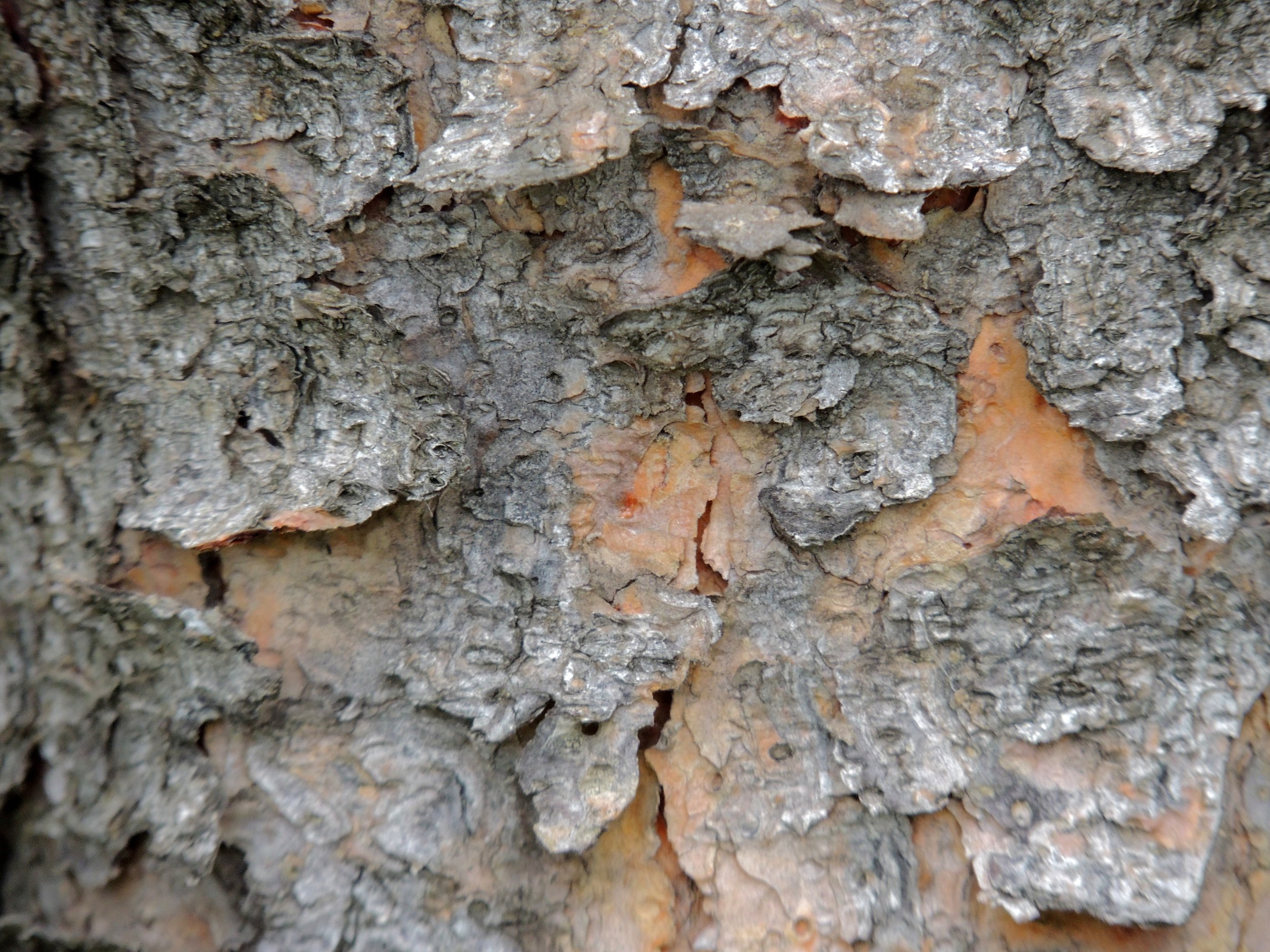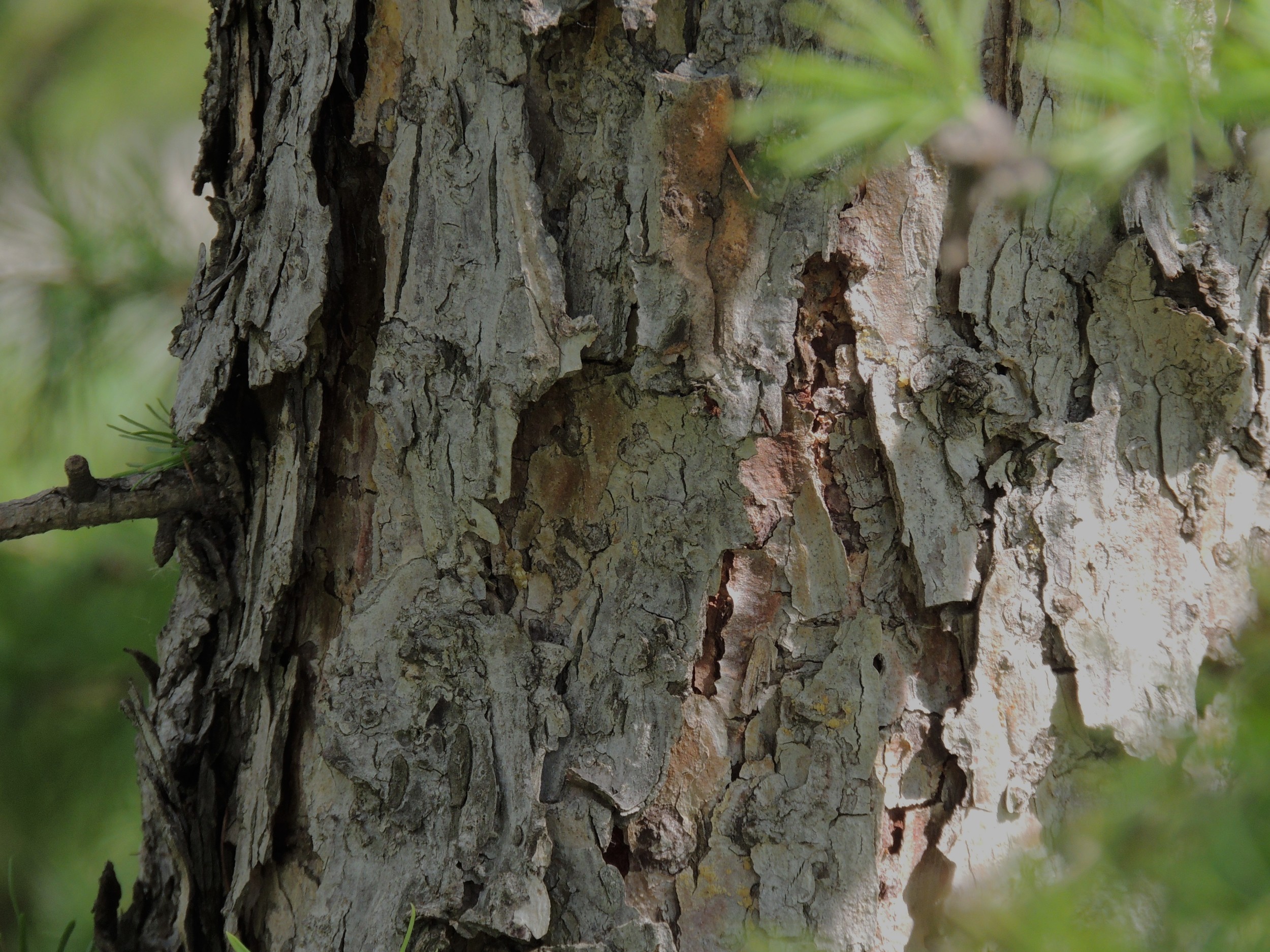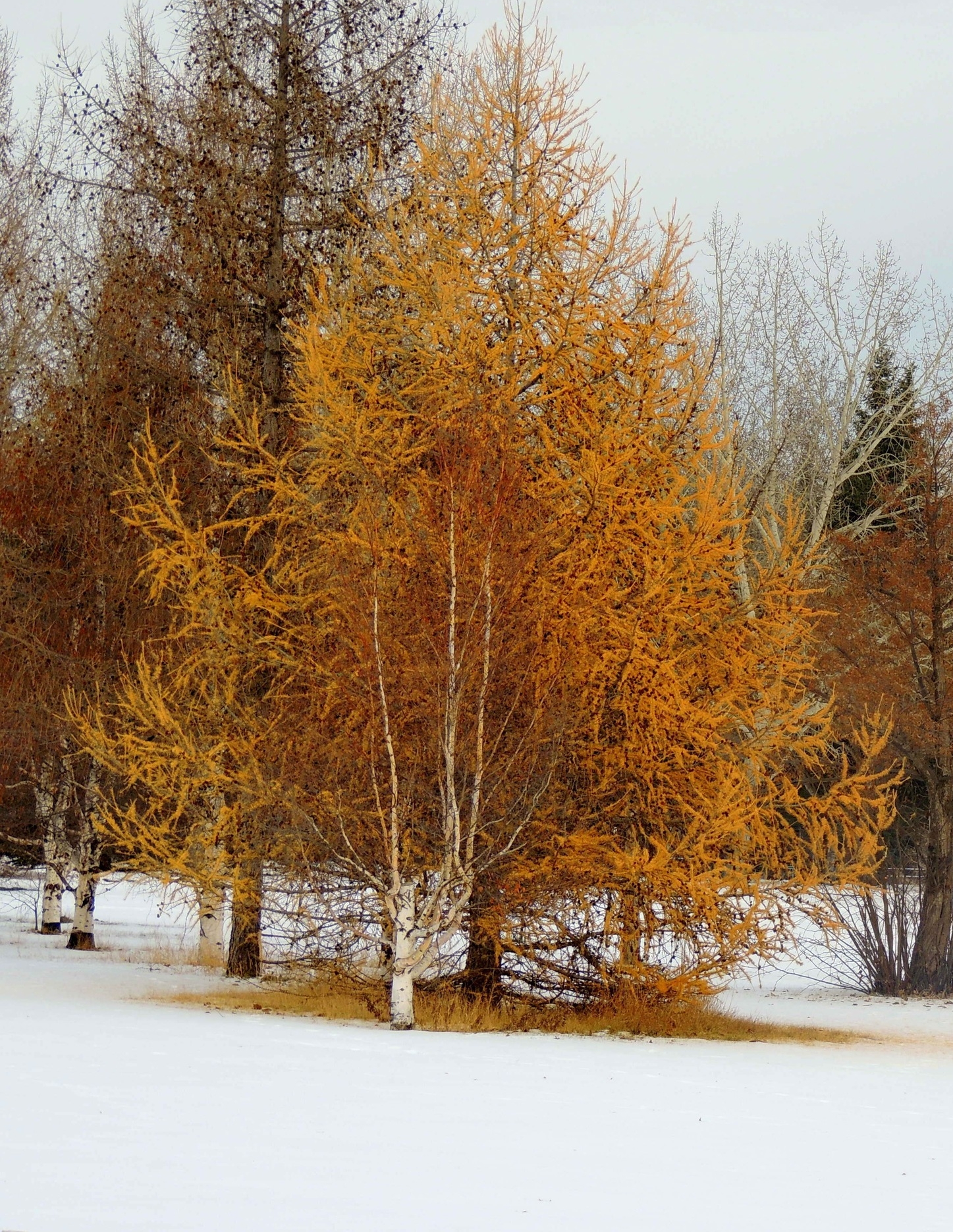How do you learn to identify different kinds of trees? For a start, you can study their leaves, bark, seeds and the silhouette of the entire tree. So, let’s try this out on a group of trees called conifers. Conifers are trees that have their seeds in cones. The conifers around here are usually spruce, pine, and tamarack trees.
Leaves: The leaves of these trees are called needles. The needles of pines are long, fairly soft and bunched (usually in twos), bound by a sheath or wrapper. Spruce needles are much shorter, stiffer and arranged singly. If you break one off and roll it in your hand, you will find that it rolls easily. Clusters of very soft needles indicate tamarack.
Seeds: Cones contain the seeds of the tree. The cones of the pine are woody and stiff, while spruce cones have thinner scales and are much more flexible. Tamarack cones are very small and like pine cones. Observe the green, unripe cones and you will see a big difference between pine and spruce.
Bark: Seeds and needles are the best indicators of a tree species; bark is more difficult. Spruce bark starts smooth, but gets rougher as the tree ages. Pines have very rough, scaly bark; often flaky and reddish and the tamarack has very rough vertically hatched bark.
Shape: In silhouette, these three should be easy to spot. Most conifers have a cone shape, but there are certain differences. In winter, the tamarack will be the easiest to identify because it sheds its needles (eventually) just like other trees shed their leaves, but its branches will be covered in tiny cones. In summer, its foliage is not as dense as pine or spruce. The spruce and the pine are evergreens and keep their needles all year. The spruce tree is very conical and comes to a point at the top and also branch ends. The pine tree is fuller and not as pointed at the crown. The branches end rounder, too.
So, do do you think that you can identify these trees now?
Now that you know three tree species, grow your nature knowledge even more by studying the trees in your neighborhood. You’ll find lots of books at the library to help you and many sites on the internet like this field guide. Happy tree spotting!
Written by Val Solash, Photos by Val Solash

